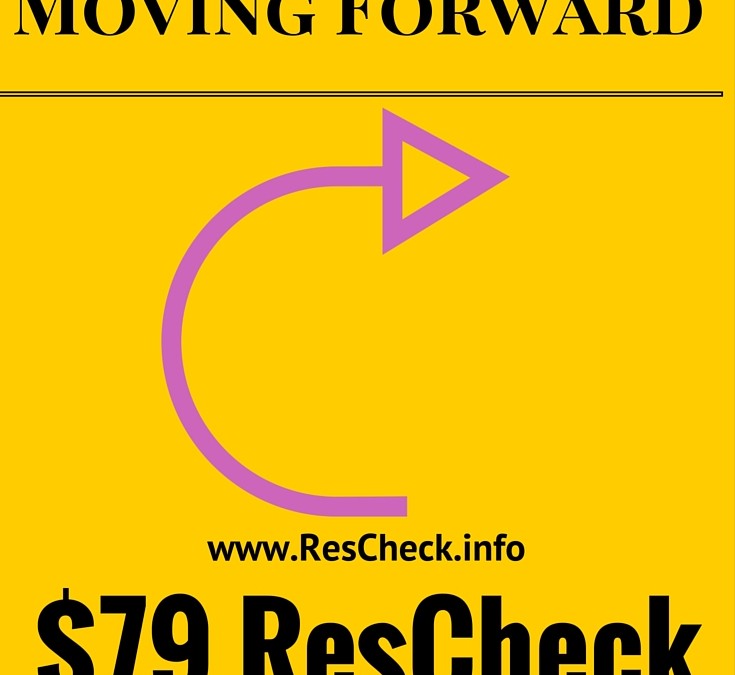Custom REScheck Report
- Any Plan
- Any Size
- Any Code
- Any State
- 24 hour turnaround or it’s free.
Moving Forward
You have conducted your initial interviews with contractor candidates. Now you will need to request at least 5 sets of your sketches from the design portion of this blog.
Send each of your top contractors who passed the first round of interviews a set of your plans and a copy of what materials and services the green home company will provide for the project. Remove the pricing then thoroughly explain what your chosen green home company will handle. A conference call or meeting between the green home material provider, the contractor, and you may be necessary.
Also at this point it is good to be aware of a contractor who feels threatened by the green home company’s kit or material package. It is true that the green home company will provide a large portion of the materials and services. This was your choice based on thorough research, your needs, and your budget. The moment a contractor tries to remove materials or services you have decided on is the moment you need to become suspect that the contractor is after a larger paycheck. Any effort to remove materials or services you have previously purchased should be seen as an early sign of inflexibility. Other times the contractor will have some alternative ideas that could really save you money. Just be quick to listen to advice and slow accepting it.
This could be the beginning of an overall effort to cheapen the quality of your project. You prepared the budget, design, picked the company, and narrowed down your list of contractors. There is a time to relinquish some control of your green home project and give the contractor some creative freedoms, but it is not now.
Provide the remaining contractors with plans, a list of materials, and installation services. Ask them to provide you with a written proposal for the rest of the project. Use this as your final compliance test when making your decision on contractors.
Finally, after reviewing quotes from your top contractors it is time to evaluate each of the bids side by side. The cheapest bid is not always the best. If red flags pop up on any proposal it is your job to highlight and discuss them before signing any agreements.
Now that you have reviewed the construction proposals, they meet your needs, and the numbers are within your budget it is time to enter into an agreement with your general contractor. I suggest spending a little extra money to review the construction contract with a lawyer who is local to the job site. You can do this with or without the contractor’s knowledge. Just have your legal counsel review the agreement and redline anything he is uncomfortable with and make some suggestions for suitable changes.
Then meet with your contractor and discuss your changes to the agreement and your concerns. Let him know you are ready to begin if your concerns can be met. At the point the contract is executed you may be responsible for a payment or retainer, but be sure to review these contract specifics before attending the meeting. If you are working with a bank or a lending institution within the confines of a construction loan they will generally have rules regarding initial deposit amounts. Make sure this amount is suitable for the project you are undertaking. If the sum the bank will give is less than the contractor requires this may have to be another area for compromise.
Just like when you are buying a car, negotiating is extremely common when contracting to build a home. The only way you lose is if you do not try. The only bad situation that can happen is that the contractor says, “No.”
Again this could indicate a sign of inflexibility that could derail the project later. Also it could mean the contractor might not possess the negotiating skills that are necessary to make your project a success.
Now that you have signed your agreement with the contractor, it is time to finalize your design. Sit down with your chosen contractor and mark any changes on the actual set of prints in red ink. Once this is complete, indicate the final changes on a set of plans for you and your contractor.
This round of changes should take less time unless you make major changes to the structural systems, footprint, or layout. I would recommend using this final design session to tweak small details. Be careful when re-inventing the wheel at this late in the game. It could lead to a dreaded case of “designers disease.” This is an illness where you lose sleep and constantly change details back and forth until your design services eat a large hole into your budget. This blog and the design work that we undertook in the early phases should act as a great vaccination against this project-crippling ailment.
Plus you already have a proposal from your contractor based on your blueprints that you both agreed upon. This plan should already meet your needs, budget, and all the other major criteria we have discussed in this blog. Keep the end target stationary because in building and in life, it is much harder to hit a moving target.
If plans are final, your contractor can be moving ahead with site work. The initial steps can be taken care of with your preliminary plans as long as no major changes have been made to your layout, foundation, footprint, bedrooms, bathrooms, or structural details. If you have modified these parts, then you will need to wait finish your final set of plans before you begin.
If you have not, your contractor can visit the local building inspector to begin the process for permits. Depending on your area this could range from a rubber stamp to full engineering. You should already know what to expect because of previous research. So there should be no surprises.
After pulling the permits, it is time to begin your site work. A driveway is needed to get materials to the site. This pathway should be graveled, but unpaved until the project is 99% complete. This will prevent you from having to repave it from heavy construction equipment damage. Next the contractor will work on details for the septic, electric, and water systems. Then they begin to excavate for the foundation.
The contractor is on site managing subcontractors for concrete, footers, foundation walls, plumbing, electrical, joists, and the subfloor. The green home material provider is at their facility putting together your material package and reviewing your project with their installation crew. They pack and deliver the material for your green home package according to your specifications.

